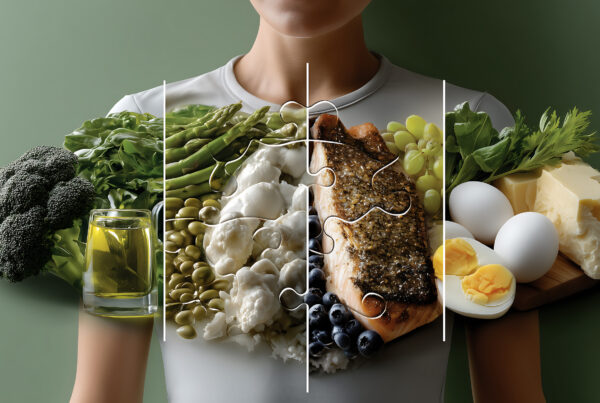”Question: What do I need to know about my gut health and is it important?
Reading time: 9 Minutes
MWi Hack:
- Learn what your microbiome is
- Get some top tips in maintaining and building great gut health
Every few years, the health world seems to get overtaken by a trendy new diet or hot-button health issue (keto diet, anybody?) that informs your Instagram feed, your grocery stores, and even the restaurants you frequent. The thing about new health topics that find their way onto the front page of Pinterest and into the conversations on morning talk shows is that they’ve usually been around for a while, they’re typically just understudied or haven’t gained enough traction to create a big change or impact within the health or medical industry. Enter the microbiome.
Similar to celiac disease or the keto diet, it’s not something you’d necessarily know about unless you actively took a deep dive into learning more, or unless you’ve experienced firsthand some of the health issues that occur because of poor gut health.
But unlike issues such as gluten sensitivity or dairy intolerance, we’ve all got a microbiome, and it’s most likely been compromised at some point in our lives.
Wait, what?! Yep. If you’ve ever suffered from acid reflux, irritable bowel syndrome, bloating, ear infections, even depression, a weak microbiome, and poor gut health could be to blame.
So, what is the microbiome, and how is it affecting your health? Join us as we guide you through the multilayered world of the microbiome…
What is the Microbiome?
The term microbiome was coined in 2001 by Nobel Prize-winning geneticist and microbiologist Joshua Lederberg to describe the approximately 100 trillion microorganisms or microbes that exist within the human body! It’s composed of all the viruses, bacteria, and single-celled microorganisms that reside in and on our bodies.
These microbes live on our skin, in our mouths, and in our guts, and according to Ann Boroch’s book The Candida Cure, contribute to our metabolic functions, protect against pathogens, and support our entire immune system. Microbes are essential to building immunity, maintaining healthy digestion, and producing and regulating vitamins within our bodies.
Studies show that there are over 1000 different types of bacteria strains living in our bodies, most of them functioning to maintain gut, heart, brain, and immune health. While these microbes are all over and within our bodies, the majority of them live within our gut where they receive a constant supply of nutrients and a nice warm, low-oxygen environment in which to thrive. When all of these gut inhabitants are living in harmony with one another via a healthy yeast-free diet (more on that later), your microbiome is balanced and a healthy ecosystem within your body is maintained.

How is the Microbiome Harmed?
You can’t talk about the microbiome without talking about candida, too. Candida is the term for a group of yeast organisms that have lived in our digestive tracts alongside thousands of bacteria, viruses, and archaea for millions of years. Candida is just one of the many organisms that comprise our magnificent microbiomes.
Unfortunately, poor diets, overuse of antibiotics, increased stress, and poor hydration cause healthy bacteria to die off and an overgrowth of yeast—candida—to occur. The result? An otherwise innocuous microbe turns into a harmful pathogen causing digestive issues, autoimmune diseases, sinus problems, allergies, acne, brain fog, anxiety, fatigue, “leaky gut”—which occurs when fungus seeps through the intestinal lining into your body’s circulating blood—and many other yeast overgrowth-related illnesses.

Candida is sneaky—and corrupting—because it so often surfaces in the form of consistent, mildly annoying health issues that tend to be left unchecked or only temporarily solved by medicine, when the core issue lies in your gut.
One of the main culprits of an imbalanced microbiome is the use of antibiotics, and if you live in the U.S., chances are you’ve definitely been prescribed them at least some point in your life.
The Candida Cure explains that when you take an antibiotic, the medicine kills both the good bacteria and the bad bacteria living inside of your body. Candida albicans, however, does not get destroyed by antibiotics. Unfortunately, all of the friendly bacteria in your body—the bacteria that keep the candida population in check—do get killed off, leaving the candida to run rampant and multiply in your body.

Similarly, a poor diet consisting of too many refined grains, sugary desserts, junk, and processed foods also contribute to candida issues, as they create ideal conditions within your digestive tract for the yeast to thrive. Chronic stress also heightens cortisol levels and increases blood sugar, which candida feeds off of.
At this point you might be thinking:
“I got strep throat this year and took antibiotics for a month, my job is always stressful, and I love cheese. How do I even start repairing my microbiome…?!”
We get it. It might sound overwhelming or even like a lost cause given how many factors can wreak havoc on our respective microbiomes, and how intrinsically linked the microbiome is to all facets of our health and wellbeing. But hope is not lost! Restoring your gut health is possible, and when your gut health is intact, you get sick less, stress is managed more responsibly, your body craves healthier foods—the ecosystem is in balance… you get the picture.
How to Maintain a Healthy Microbiome

So how do you begin reversing the damage done to your microbiome?
One of the first steps to reclaiming gut health is by modifying your diet to stop feeding the yeast in your body and to keep it from growing. Here’s a list of the main food groups you should limit as you begin to heal your microbiome:
- Artificial sweeteners
- Grains containing gluten
- Alcohol
- Excessive meat, especially processed meat
- Refined carbohydrates (such as refined grains)
- Refined sugars and high-fructose corn syrup
- Excessive eggs or dairy
- Caffeine
- Trans fats
Each of these categories feeds yeast and will continue to compromise the microbiome, perpetuating the chronic illnesses and subsequent pesky cycles of antibiotics we find ourselves trapped in. As you’ve probably inferred from the above, a diet with plenty of plants is key to fighting against candida and restoring your microbiome. We’re not saying you need to go vegan, we’re saying a diet low in carbohydrates like refined grains and sugars in favor of veggies is what helps get candida under control.
Keep in mind that restoring your microbiome is a journey, and shouldn’t be regarded as a fad diet or even used solely as a weight-loss technique (though you will likely lose weight as you work toward a healthier microbiome). The microbiome is complex and can be triggered by an array of elements, so taking a hard examination of your life—what you eat, drink, how much you sleep, how often you’re sick, how much stress you experience day-to-day—should be your first order of business as you learn how to make positive lifestyle changes for a healthy and happy microbiome!
MWi would like to thank Emma Travino for sharing her expert insights with our community through the Fit Joy Platform. Read the original article:
https://fitjoyfoods.com/blogs/life-of-joy/a-beginners-guide-to-the-microbiome






